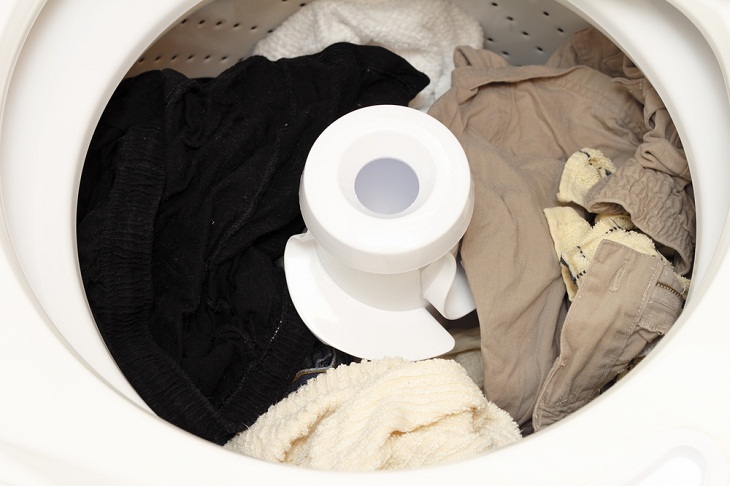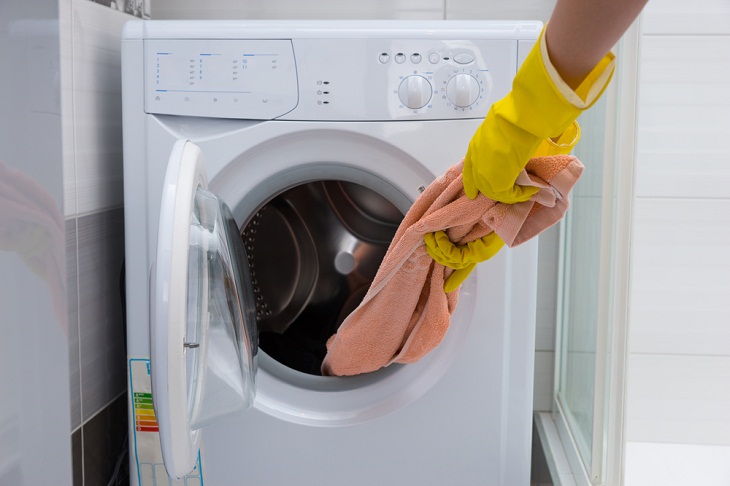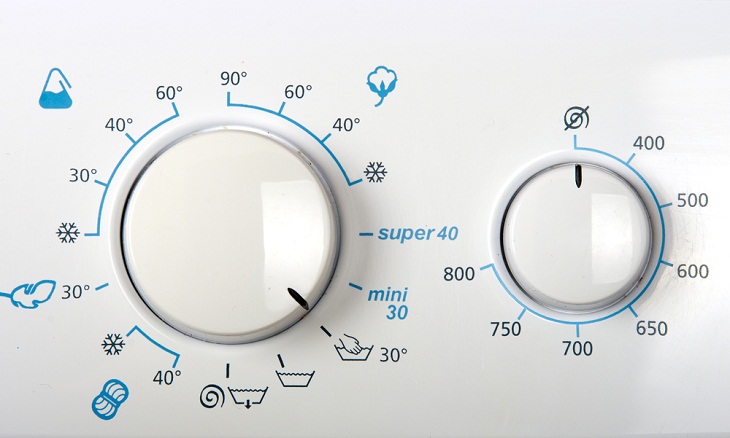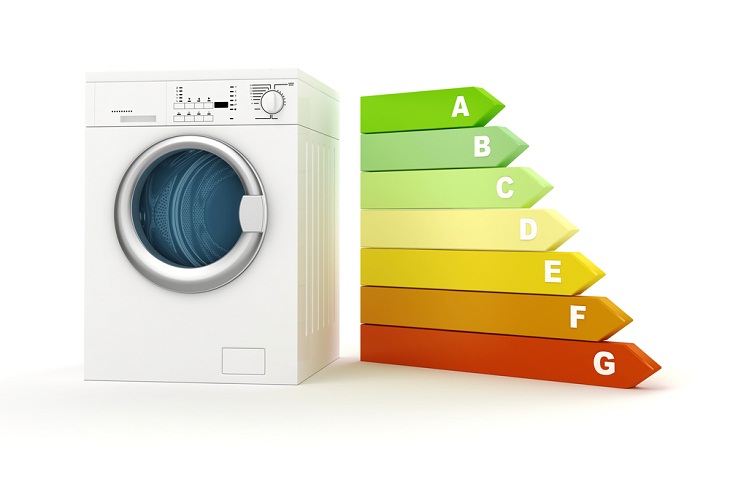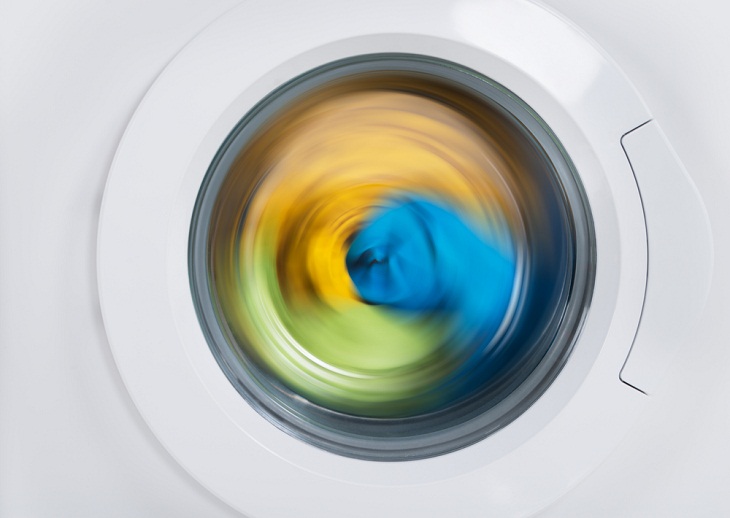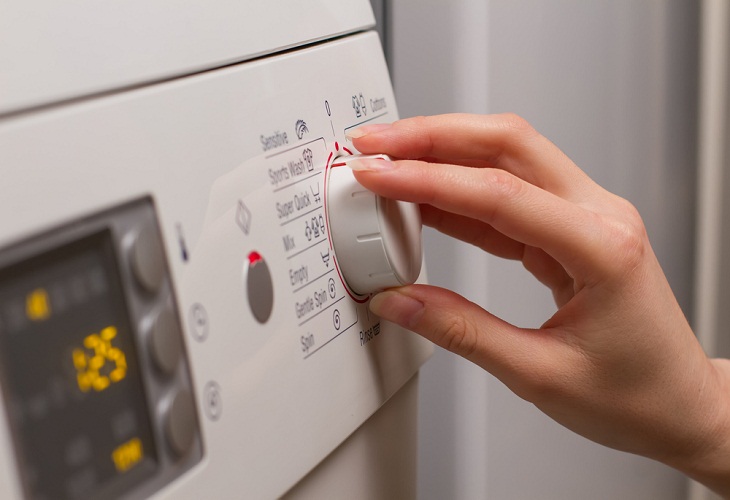B) Front-Loading Fully Automatic Washing Machines: Front-loading machines have a door at the front that opens to load and unload clothes. They are known for their efficiency, as they use less water and energy compared to top-loading models. Front-loading machines are generally gentler on clothes, making them ideal for delicate fabrics. They also offer additional features like steam wash and faster spin cycles.
Semi-Automatic Washing Machines
Semi-automatic washing machines offer manual and automatic functionalities. These machines require some level of user involvement during the washing process. They have separate compartments for washing and drying, but the user needs to transfer the clothes manually from one compartment to another.
Semi-automatic washing machines are available in both top-loading and front-loading designs, similar to fully automatic machines.
A) Top-Loading Semi-Automatic Washing Machines: Top-loading washers are the most common type found in many households. They offer greater flexibility, as the user can add or remove clothes even during the wash cycle. These machines typically come with a wash timer and a separate spin timer. Once the wash cycle is complete, the user needs to transfer the clothes to the spin compartment for drying.
B) Front-Loading Semi-Automatic Washing Machines: Front-loading semi-automatic machines follow the same concept as their fully automated counterparts. However, they require manual intervention for transferring clothes from the wash compartment to the spin compartment. Front-loading semi-automatic machines are known for their efficiency and water-saving capabilities.
Washer-Dryer Combos
Washer-dryer combos integrate both washing and drying functions into a single unit. In areas with limited space, these machines eliminate the need for a separate dryer. Washer-dryer combos are available in fully automatic and semi-automatic variants.
Twin Tub Washing Machines
Twin tub washers feature two separate compartments, one for washing and the other for spinning or drying. These machines offer enhanced flexibility, as the user can wash one load while simultaneously drying another. Twin tub machines are available in both semi-automatic and fully automatic versions.
2. Capacity
Capacity plays a vital role when considering a washing machine. The size of the drum determines the capacity, ranging from 1.0 cubic feet (found in pedestal washers) to 6.0 cubic feet. The larger your laundry needs or family size, the greater the capacity you'll require.
While it may be tempting to run multiple washes to keep up with a large laundry load, this approach will lead to increased water and electricity consumption. Additionally, it won't contribute to prolonging the lifespan of your washer. It's advisable to choose a washing machine with an ideal capacity from the start. Typically, a medium-capacity washer falls within the range of 3.5 to 4.4 cubic feet, while a large capacity is considered 4.5 cubic feet and above. If you're uncertain, it's recommended to physically examine various models and compare their drum sizes before making a purchase.
It's important to note that overloading your washing machine is one of the ways you may unknowingly cause damage. To prevent this, you must select the appropriate capacity for your needs.
3. Temperature
Temperature control is an essential aspect to consider when washing clothes effectively. In addition to addressing water quality, it's crucial to emphasize the significance of temperature regulation. Regular water temperatures alone cannot eliminate tough stains like bacteria, germs, and even blood stains. Therefore, specific water temperatures must be utilized to ensure the eradication of various types of stains, thereby killing any lingering germs, viruses, and bacteria on the garments.
Water temperature control can be categorized into three distinct types:
Cold wash: This type of wash utilizes a temperature of 30°C (86°F) or below, making it suitable for effectively removing dust or mud from clothing.
Warm wash: Ideal for eliminating bodily fluids such as sweat, a warm wash employs a 40°C (104°F) temperature range.
Hot wash: A hot wash utilizes a temperature of 60°C (140°F) in order to remove stubborn stains, such as bacteria, viruses, and other persistent stains.
4. Stain Removal Options
Consider selecting a model that includes pre-programmed stain removal settings, such as sanitize or allergen-free, if you are looking for extra stain removal options. These dedicated features help you fine-tune your wash cycles specifically for challenging stains and odors. By utilizing these advanced options, your washing machine takes on a more proactive role in the cleaning process, freeing you from the burden of tedious stain removal efforts.
5. Energy Efficiency
In addition to other considerations, energy efficiency plays a crucial role in selecting a washing machine. Front-load washing machines are known for their lower electricity consumption compared to top-load models. This is attributed to their larger load capacity, which allows for more efficient water and energy use.
Moreover, choosing a washing machine with an Energy Star rating can save up to 30% on energy savings. Additionally, opting for a machine with higher spin speeds can also contribute to energy conservation. Therefore, it is advisable to choose a washing machine with a high spin speed to maximize energy efficiency.
6. Spin Rate
Although spin speed may not be the first factor considered when purchasing a washing machine, it holds significant importance. Opting for higher spin speeds ensures efficient water extraction from your clothes, aiding in faster drying. On the other hand, lower spin speeds are preferable for handling delicate fabrics. Ideally, the washing machine should offer a range of spin speeds ranging from 1200 to 1600 RPMs.
7. Programs
Keep in mind that different washing machines provide a range of washing programs designed to cater to your preferences. These programs are aimed at making washing clothes easier and more personalized. When selecting a washing machine, consider the following programs based on your specific washing needs:
1. Daily Wash: If you frequently wash your clothes and undergarments, a washing machine with a Daily Wash program would be beneficial. This program conserves water and completes the cleaning process faster.
2. Pre-soak Wash: This program is ideal for tackling stubborn garment stains. Instead of immediately initiating the washing cycle, the Pre-soak Wash program first allows the clothes to soak and then agitates them to effectively remove the stains.
3. Quick Wash: Nearly all fully automatic machines feature the Quick Wash program. As the name suggests, it efficiently washes your laundry in the shortest possible time, typically completing the cleaning process within 30 minutes. Furthermore, you can utilize the Quick Wash feature for lightly soiled garments or when you're pressed for time.
4. Specialized Wash: Some washing machines offer specialized wash programs tailored to specific clothing types or fabric sensitivities. These programs are designed to address the unique needs of delicate fabrics, woolens, baby clothes, or heavily soiled items. Using the appropriate specialized wash program will ensure that your laundry items are cleaned and cared for in the best possible manner.
8. Auto Dispense
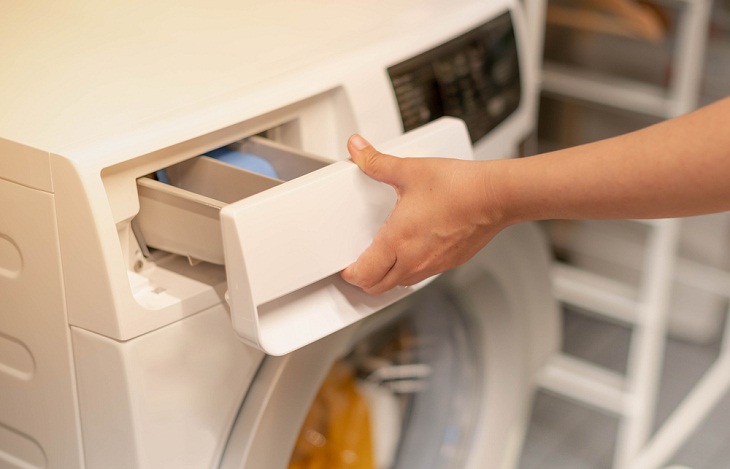
For those who dislike the hassle of measuring detergent for each wash, this feature is a must-have. In some washing machines, you'll find auto-dose features, which intelligently calculate the optimal detergent quantity based on the load's size and the amount of dirt present. The machine then takes care of dispensing the necessary detergent from its supply, eliminating the need for you to do it manually.
Similarly, this function extends to fabric softeners as well, allowing you to run multiple cycles without handling a bottle. This feature helps break the habit of excessive detergent usage, which can be difficult to completely rinse out and leads to increased expenses.
9. Anti-Vibration Technology
Anti-vibration technology has become a standard feature in modern washing machines, significantly reducing noise and movement when they are in the spin cycle. It utilizes advanced engineering techniques and features such as enhanced suspension systems, shock absorbers, and improved drum balancing. This feature proves particularly beneficial for people living in apartments or units with close proximity to others, as it helps to prevent disturbances and ensures a more peaceful environment during laundry operations.
10. Size and Dimensions
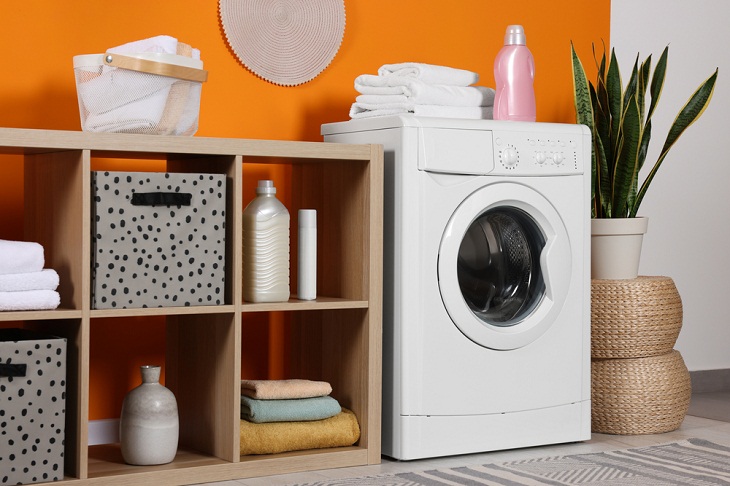
Find a washing machine that fits perfectly within your designated space while providing adequate capacity to handle your family's laundry needs. For example, if you live alone, with a partner, or with a roommate, a 5 kg (11 lbs) or 6 kg (13 lbs) washing machine should be sufficient. However, if you live in a household with three or more members, a larger capacity machine may be more suitable.
Moreover, pay close attention to the washing machine's external dimensions. Conventional washing machines are 27 inches wide. If space is limited, it is advisable to verify the dimensions in advance. Nobody wants a washing machine protruding a few inches and disrupting the visual appeal of their laundry area or bathroom. It is also worthwhile to consider whether there will be ample room above or in front of the machine to fully open the door. The last thing anyone wants is a shelf that prevents them from loading their laundry.

